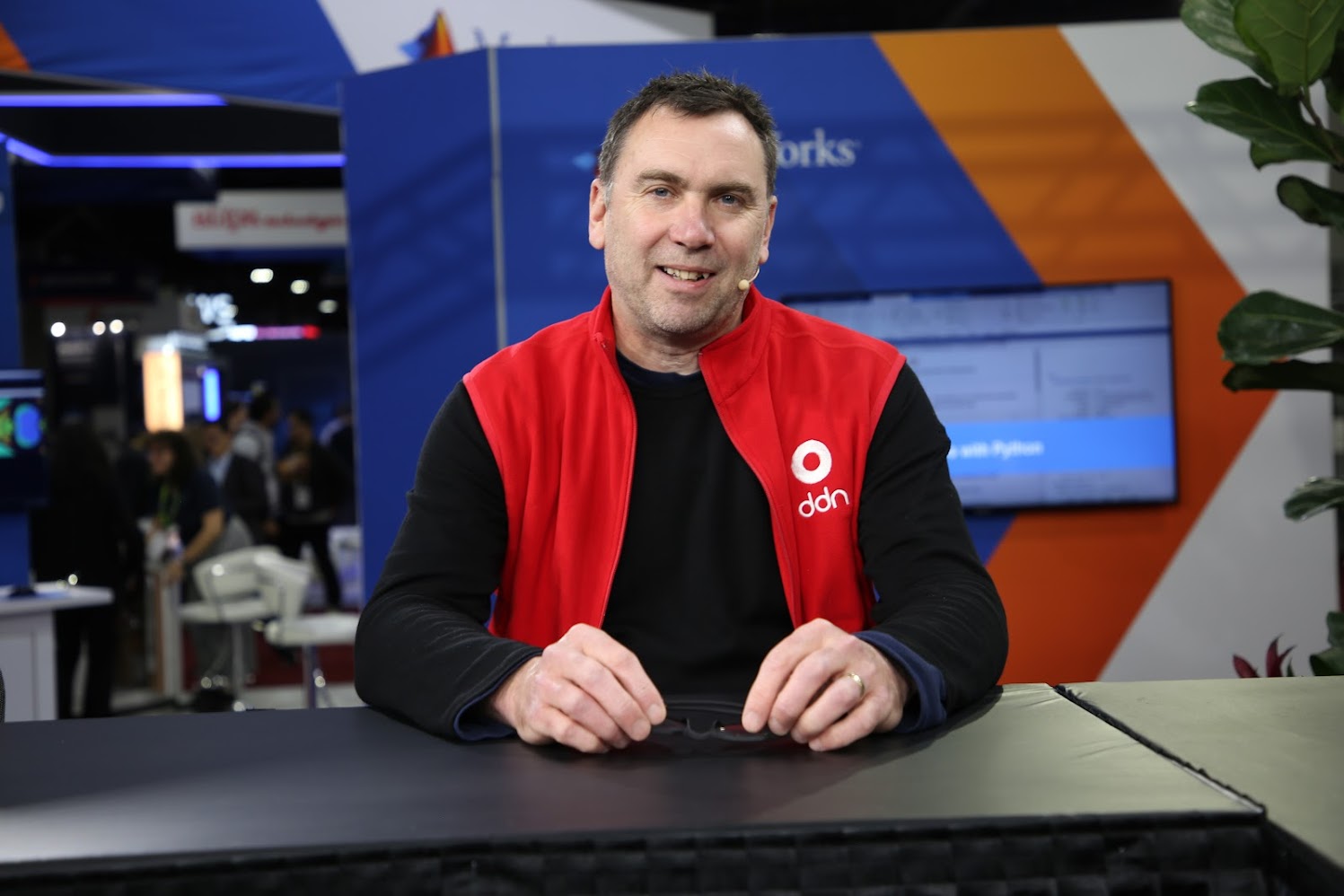 AI
AI
 AI
AI
 AI
AI
With the launch this week of upgrades for its data intelligence platform, DataDirect Networks Inc. has signaled its intent to bring significant scalability and GPU performance to the infrastructure necessary for processing AI workloads.
The company’s deep integration with Nvidia Corp. GPUs and the introduction of its next generation A³I data platform are designed to translate into faster AI training and delivery of real-time insights.

DDD’s James Coomer talks with theCUBE about GPU performance during SC24.
“Our largest customer has a hundred thousand GPUs, and overall we’re supporting 500,000 GPUs globally — we’ve just doubled the density of our appliance,” said James Coomer (pictured), senior vice president of products at DDN. “Performance efficiency and capacity efficiency are crucial to our customers. Huge data centers, they’re struggling for power, struggling for space and struggling for GPUs. Our job is to help them reduce the amount of instruction they spend on our piece and deliver new acceleration.”
Coomer spoke with theCUBE Research’s Savannah Peterson at SC24, during an exclusive broadcast on theCUBE, SiliconANGLE Media’s livestreaming studio. They discussed DDN’s latest releases, its collaboration with Nvidia and GPU performance. (* Disclosure below.)
The introduction of DDN’s A³I platform provides another chapter in the company’s partnership with Nvidia. The firm’s integration with the chipmaker has helped propel performance advancements for AI and high-performance computing workloads.
“Six years ago, Nvidia came to us after looking at many vendors and they chose DDN to support their first Selene supercomputer,” Coomer said. “They came back to DDN again, and they bought our second-generation appliance, the AI400X2. We built the AI400X3, and that’s been specifically designed to support the new Nvidia Blackwell GPUs.”
DDN’s collaboration with Nvidia and its platform upgrades highlight the continued need to build infrastructure in support of data-driven AI models. This includes being able to manage checkpoints or snapshots of optimization results.
“When you’re running these models, you need to push data, push the models themselves and bring the checkpoints down,” Coomer explained. “It’s quite a complex activity, but for maximum stability and efficiency, you use this software to do that very efficiently.”
Here’s the complete video interview, part of SiliconANGLE’s and theCUBE Research’s coverage of SC24:
(* Disclosure: DataDirect Networks Inc. sponsored this segment of theCUBE. Neither DDN nor other sponsors have editorial control over content on theCUBE or SiliconANGLE.)
THANK YOU